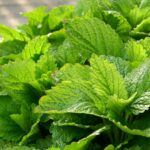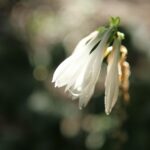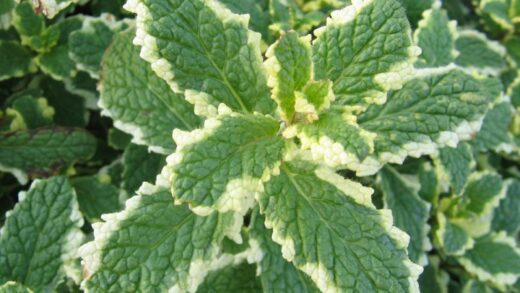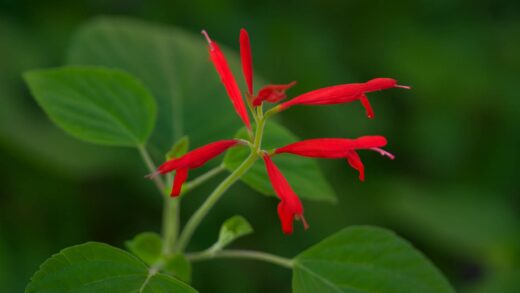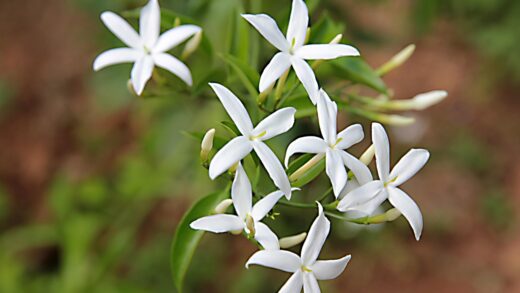Successfully cultivating the African lily, a plant celebrated for its striking, globe-like flower clusters, requires a dedicated and informed approach to its care throughout the year. This plant, native to Southern Africa, brings a touch of the exotic to any garden, but its performance is directly tied to meeting its specific environmental and nutritional needs. Understanding the fundamental aspects of its life cycle, from active growth in spring and summer to its dormant period, is the cornerstone of achieving vigorous health and prolific blooming. Providing the right balance of light, water, and nutrients will not only ensure its survival but allow it to thrive and become a stunning focal point.
The foundation of proper care begins with selecting the appropriate location and container for the plant. African lilies flourish in well-draining soil, as their fleshy roots are highly susceptible to rot if left in waterlogged conditions. When planting in containers, which is a common practice in climates with cold winters, it is crucial to choose a pot that is large enough to accommodate the root system but not so large that the plant focuses on root growth at the expense of flowering. A snug fit often encourages more impressive blooming, so repotting should only be undertaken when the plant is severely root-bound. The potting medium itself should be a rich, loam-based compost mixed with grit or perlite to enhance drainage.
During the active growing season, which typically spans from spring through late summer, consistent care is paramount for the development of strong foliage and abundant flowers. This period demands regular monitoring of soil moisture and the application of a balanced fertilizer to support the plant’s high energy requirements. The intensity and frequency of care should be gradually increased as the weather warms and the days lengthen, signaling to the plant that it is time to invest its resources in producing its spectacular floral display. It is also the ideal time to inspect the plant for any signs of pests or diseases, as early intervention can prevent significant damage.
As the season progresses and flowering concludes, the plant’s needs begin to shift in preparation for dormancy. The vibrant green leaves will start to yellow and die back on deciduous varieties, while evergreen types will maintain their foliage but cease active growth. This is a natural part of the plant’s cycle, and care practices must be adjusted accordingly to support this transition. Reducing watering and ceasing fertilization helps the plant to harden off and conserve energy for the next growing season, a critical step for its long-term health and survival, especially in regions where it needs to be protected from frost.
Understanding the growth cycle
The annual life cycle of the African lily dictates the specific care it requires at different times of the year. In early spring, as temperatures rise, the plant awakens from its winter dormancy, and new shoots begin to emerge from the rhizomatous roots. This is a period of rapid foliage development, where the plant builds up the necessary energy reserves for the upcoming flowering season. Providing adequate moisture and initial nutrients during this phase is crucial for establishing a strong framework of healthy leaves, which in turn will support the growth of robust flower stalks.
More articles on this topic
Summer represents the peak of the African lily’s activity, culminating in its magnificent flowering display. The plant channels the majority of its energy into producing the tall, sturdy scapes that are topped with umbels of trumpet-shaped flowers. During this time, its demand for water and nutrients is at its highest, and consistent care is essential to sustain the blooms for as long as possible. The duration and quality of the flowering period are direct reflections of the care and conditions provided throughout the preceding spring months, highlighting the importance of a consistent regimen.
As late summer transitions into autumn, the flowering period comes to an end, and the plant begins to prepare for dormancy. The energy flow reverses, with the plant drawing resources from the foliage back down into the fleshy roots for storage over the winter. For deciduous varieties, this is visually evident as the leaves begin to yellow and wither, a process that should be allowed to complete naturally. For evergreen types, growth will slow significantly, and the plant will enter a state of rest. This preparatory phase is vital for ensuring the plant has sufficient reserves to survive the cold months ahead.
Winter is the period of rest for the African lily, a crucial time for the plant to recuperate and prepare for the next growth cycle. During dormancy, metabolic activity is minimal, and the plant’s need for water and nutrients is drastically reduced. Whether the plant is overwintered outdoors in a mild climate or brought indoors for protection in a colder region, it is essential to provide conditions that allow it to remain dormant without desiccating or freezing. A successful dormant period is the final, critical element in the annual cycle, setting the stage for a vigorous return to growth in the spring.
Soil and potting requirements
Selecting the correct soil composition is a critical factor in the long-term health and vitality of the African lily. These plants require a substrate that is both fertile and exceptionally well-draining to prevent root rot, their most common ailment. An ideal mix consists of a high-quality, loam-based potting compost combined with coarse sand, grit, or perlite to improve porosity. This ensures that while the roots have access to necessary moisture and nutrients, excess water is able to drain away freely, preventing the saturated conditions that can be fatal to the plant.
More articles on this topic
When planting in containers, the choice of pot plays a significant role in managing the plant’s growth and flowering. African lilies are known to perform best when their roots are slightly restricted, as this condition encourages the plant to direct its energy towards producing flowers rather than excessive root growth. Therefore, select a pot that comfortably houses the root ball with only a small margin for growth. Repotting should be delayed until absolutely necessary, typically every two to four years, or when the roots have filled the container to the point of distorting or cracking the pot.
The physical characteristics of the container are also important considerations for the well-being of the plant. Terracotta or clay pots are often recommended as their porous nature allows for better air exchange and helps the soil to dry out more evenly than plastic containers. This can be particularly beneficial in preventing waterlogged soil. Regardless of the material, it is imperative that the container has ample drainage holes at the base to allow for the unimpeded exit of excess water after irrigation, which is fundamental to preventing root diseases.
For garden planting in suitable climates, site preparation is key to success. The planting area should be amended to improve its structure and drainage, especially in heavy clay soils. Incorporating generous amounts of organic matter, such as well-rotted compost or manure, will enrich the soil, while the addition of horticultural grit will create the necessary drainage channels. Planting the rhizomes at the correct depth, with the crown just at or slightly above the soil surface, is also crucial for preventing rot and encouraging healthy, vigorous growth from the outset.
Light and temperature considerations
The African lily is a sun-loving plant that thrives when exposed to ample direct sunlight, which is essential for photosynthesis and energy production. To achieve the most prolific and vibrant blooms, a position that receives at least six to eight hours of direct sunlight per day is ideal. While the plant can tolerate partial shade, insufficient light will often result in weak, leggy growth and a significant reduction in the quantity and quality of flowers. The foliage may appear lush in shadier spots, but the primary ornamental appeal of the plant will be compromised.
Temperature plays a crucial role throughout the life cycle of the African lily, influencing its growth, flowering, and dormancy. During the active growing season in spring and summer, the plant prefers warm conditions, which stimulate vigorous foliage development and the initiation of flower stalks. Optimal daytime temperatures in the range of 20-25°C (68-77°F) promote healthy metabolic activity. However, the plants are adaptable and can tolerate higher temperatures, provided they receive adequate moisture to prevent heat stress and dehydration.
The distinction between deciduous and evergreen varieties of African lily is particularly important when considering their temperature tolerance and overwintering needs. Deciduous types, which lose their leaves in autumn, are generally hardier and can withstand cooler temperatures, with some cultivars surviving frosts if well-mulched in the ground. Evergreen varieties, on the other hand, are more tender and sensitive to cold. They require protection from freezing temperatures to prevent damage to their foliage and root systems, making them better suited for container cultivation in colder climates where they can be moved to a protected location.
In preparation for winter, a period of cooling temperatures is beneficial as it helps to signal the plant to enter dormancy. This natural transition is essential for the plant’s long-term health. For potted evergreen specimens being moved indoors, a cool but frost-free environment, such as an unheated garage or greenhouse, is ideal. This location should provide bright, indirect light and maintain a temperature range that keeps the plant dormant without exposing it to damaging frost. The goal is to provide a restful period that mimics its natural cycle, ensuring it is ready for vigorous growth when warmer conditions return.
Watering and feeding regimen
A carefully managed watering regimen is fundamental to the health of the African lily, particularly during its active growth phase from spring to late summer. During this period, the soil should be kept consistently moist but never waterlogged. The best practice is to water the plant thoroughly when the top few centimeters of the soil feel dry to the touch, allowing excess water to drain away completely. This deep watering encourages the development of a strong, extensive root system. As the plant’s growth accelerates and temperatures rise, the frequency of watering will need to be increased accordingly to meet its metabolic demands.
Conversely, as the plant ceases flowering and begins to enter its dormant period in autumn, watering should be gradually but significantly reduced. This reduction in moisture signals the plant to slow its growth and prepare for winter rest. For deciduous types, watering should almost cease once the leaves have completely died back. For evergreen varieties, especially those overwintered in cool conditions, watering should be minimal, just enough to prevent the roots from completely drying out. Overwatering during dormancy is one of the most common causes of failure, leading to root rot in the resting plant.
Proper nutrition is equally vital for promoting robust growth and spectacular flowering. The African lily is a heavy feeder during its growing season and benefits from regular applications of a balanced liquid fertilizer. Begin feeding in the spring as new growth emerges and continue every two to four weeks until the flowers start to fade in late summer. A fertilizer with a high potash (potassium) content is particularly beneficial as it specifically encourages the development of strong flower stems and vibrant blooms.
It is crucial to cease all feeding by the end of summer to allow the plant to prepare for its dormant period. Continuing to fertilize into the autumn can stimulate new, tender growth that is highly susceptible to frost damage and can interfere with the natural process of senescence. The stored energy from a season of proper feeding will be sufficient to sustain the plant through the winter and fuel its initial growth spurt the following spring. This disciplined approach to feeding aligns with the plant’s natural cycle and is key to its sustained performance year after year.
Post-flowering care and maintenance
Once the spectacular floral display of the African lily begins to fade, a shift in care and maintenance is required to ensure the plant’s health and prepare it for the next season. The spent flower stalks can be removed to maintain a tidy appearance and to prevent the plant from expending energy on seed production. This is achieved by cutting the stalks down to the base of the plant using clean, sharp secateurs. This practice, known as deadheading, can sometimes encourage a second, smaller flush of blooms in certain cultivars, although its primary purpose is to redirect energy back to the rhizomes.
Allowing the foliage to remain on the plant after flowering is of utmost importance, especially for deciduous varieties. The leaves will continue to photosynthesize throughout the late summer and early autumn, creating vital energy reserves that are stored in the fleshy roots for the winter. Prematurely removing the foliage will deprive the plant of this crucial energy-storing process, weakening it and potentially compromising its survival and the quality of the following year’s blooms. The leaves should only be removed once they have completely yellowed and withered naturally.
This post-flowering period is also an opportune time to assess the plant’s overall condition and plan for any necessary future actions, such as division or repotting. If the plant has become overly congested in its pot or has formed a large clump in the garden, it is a good candidate for propagation by division. However, this task is best performed in the spring, just as new growth is emerging. Making a note of which plants require attention in the autumn allows for efficient and timely garden management when the next growing season begins.
As autumn progresses, the final stage of post-flowering care involves preparing the plant for winter dormancy. This includes the gradual reduction of watering and the cessation of all feeding, as previously discussed. For plants in the ground in cooler climates, applying a thick layer of dry mulch, such as straw or bark chips, around the base of the plant after the first light frost can provide essential insulation for the root system. This protective layer helps to shield the rhizomes from the most severe winter temperatures, increasing their chances of survival.









